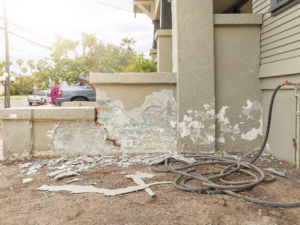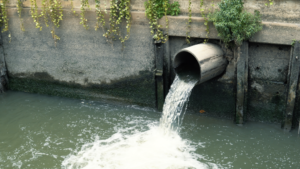Stucco Repair is a valuable service that maintains the integrity of homes and adds to their value. Understanding the process and being well-prepared for unexpected challenges is important to ensure that repairs last for years.
Isolated cracks, surface blemishes, and minor mold growth can all be repaired with stucco repair. However, moisture damage requires more comprehensive solutions like remediation. Click the https://www.stuccorepairphilly.com/ to learn more.

A crack in your stucco wall opens up an opportunity for moisture to seep in. This moisture can cause mold and other problems, so it’s important to repair these areas as soon as possible. Depending on the severity of the crack, it may need to be repaired with either a patch or a full application of stucco. It’s also important to understand what causes cracks in stucco and how to spot them so you can take the right course of action for your home.
Unlike hairline cracks, large cracks in stucco are a sign of structural issues. These often appear at the intersection of vertical walls or around window and door frames. They can also form along the joints where wood framing meets concrete or brick masonry. Large cracks are usually indicative of poor construction, and should be repaired as soon as possible to prevent further damage.
When repairing cracks, make sure to use a bonding agent to ensure that the new stucco adheres. After applying the bonding agent, clean the area and apply a layer of brown coat stucco mix to the damaged area. This layer should be a quarter-inch thick and should match the existing texture of the wall.
For best results, mist the stucco occasionally to prevent it from drying too quickly. This process is known as moist curing and helps improve the final strength of your repair. It’s also a good idea to cover the stucco with a protective layer like paint, stain or varnish to shield it from moisture and other elements. Moisture meter testing is also an option for diagnosing issues before they become worse. This can give you a reading of the moisture levels in your stucco, which can help you to determine the right course of action for your home.
Stains
Staining and discoloration of your stucco can be a result of many different things. Mildew, algae, and other micro-organisms growing in the porous surfaces of your walls can leave unsightly stains that require proper cleaning and bleaching to remove. Stains can also be caused by metals such as grates, vents, and gutters that rust over time when they come in contact with the wall. If you notice that your stucco is soiled, wash the lower portions of the wall first and then work up to the more visible parts. Be sure to use a pressure washer and follow the directions on the label.
If stains persist, your stucco may need to be replaced. Moisture intrusion can cause rot, mold, mildew, and other problems that are best fixed by replacing the damaged area with new stucco. Remediation is generally more costly than repair, but it is a necessary service that saves you money in the long run by fixing moisture-related issues before they get out of hand.
Before beginning any repairs, your contractor will assess the damage by walking around the exterior and looking at the stucco closely. He or she will look for cracks and holes and note their location and size. A physical test will also be performed by tapping the surface of the stucco. If it sounds hollow, this means that the stucco is separating from its lath support and there’s trapped moisture behind it.
The contractor will then wash the surface of the affected areas, which can be done by power washing or with a scrub brush. If the surface is very dirty, you may want to consider pre-wetting it before washing. This will prevent the cleaning solution from being absorbed into the walls, which can harm them. A troweling technique will then be used to place the new stucco mix, ensuring that it is filled in all crevices and doesn’t leave air pockets. The new stucco will then be textured to match the existing surface and be painted or stained as needed.
Efflorescence
Efflorescence is the white, powdery residue that appears on the surface of stucco and masonry. It is composed of water-soluble salts including calcium carbonate. The salts are deposited on the surface of the wall when water seeps through the stucco and dissolves the cement that forms the aggregate of the concrete or masonry. The water then evaporates leaving behind the white deposits of soluble salts. The occurrence of efflorescence is an indication that moisture is getting into the walls and can lead to damage. Efflorescence can also indicate a structural problem with the wall system if it is occurring repeatedly and not addressed.
Fortunately, there are many ways to prevent and treat efflorescence in stucco. The first step is to evaluate the structure. This involves reviewing the wall sections and construction details to determine potential moisture travel paths and sources of contamination from soluble salts. It is also important to review the roof and wall juncture as well as the flashing details to assess the severity of the issue.
Once the assessment has been completed, it is important to clean the affected areas. This can be done by dry brushing or by using a masonry cleaner. In more severe cases, a diluted solution of muriatic acid or a specially formulated efflorescence remover can be used. In some instances, a pressure washer can be used but it is important to start with a low pressure and gradually increase as needed to avoid damaging the stucco.
Once the area has been cleaned, it is recommended to fog coat the entire surface of the wall. A fog coating is a mix of water and dry pigment that is applied to the surface and will even out the color of the stucco. This will help to prevent the reoccurrence of efflorescence in the future.
Impact damage
When impact damage occurs, it’s essential to get it repaired immediately. Not only does it affect the aesthetics, but it may also reveal underlying problems like structural integrity concerns or moisture intrusion. This type of damage can be caused by a variety of issues, including inefficient drainage systems and temperature fluctuations.
A professional repair contractor will first assess the area to determine the appropriate method for repairing it. This will depend on the material involved and its condition, and it may include techniques like patching, resurfacing, or reapplication. For stucco surfaces, a troweling technique is often employed to ensure proper adhesion and a seamless finish. A bonding agent is then applied to the cleaned and prepped surface, followed by the stucco mix. The mixture should be thoroughly pushed into the cracks and holes, slightly overfilling to allow for shrinkage as it dries. After the stucco dries, it is then textured to match the surrounding areas, a process that requires skill and attention to detail.
Stucco damage can be cosmetic or structural, and the extent of the repair will affect cost. Surface blemishes such as dents and dings are easily remedied with patching. More extensive damage, such as crumbling or sagging areas, can indicate that the stucco is losing its support. A physical test, such as tapping the surface with a rubber mallet, can help determine the cause.
Moisture damage is a major concern and can lead to rot and mold growth. In addition, it can widen cracks and peel stucco. This can be caused by inefficient drainage systems, temperature fluctuations, or physical damage. It can be identified by water stains, discoloration, or bubbles on the surface.
Preparation
A key step in stucco repair is making sure the damaged area is clean, dry, and ready to accept new material. This is usually done by using a wire brush and scrubbing away any loose bits. Once the surface is cleared, it should be inspected for damage such as cracks, holes, and discoloration. It is also important to look at the metal lath that supports the stucco and make sure it is in good shape. If it is rusty or torn, then it should be replaced.
Once the damaged area is cleaned, a bonding agent can be applied to ensure the new stucco adheres to the existing material. After the bonding agent has been allowed to set, the crack or hole can be filled with stucco mix. It is important to fill the cracks evenly and slightly overfill them to allow for shrinkage as it cures. Once the stucco is mixed, it can be pushed into the cracks and holes and smoothed to match the surrounding texture of the stucco. It is then important to wait for the stucco to cure according to the manufacturer’s instructions.
Stucco is an excellent choice for exteriors and provides a durable finish that can last for years. However, it is important to inspect the stucco regularly and to seek out professional help for any major repairs that may be necessary. Professionals have the proper application tools, safety gear like eye protection and gloves, and a knowledge of stucco that can prevent costly mistakes. They are also insured and will guarantee their work. This gives homeowners peace of mind and confidence in a job well done. To find a trusted contractor, visit our Stucco Directory.
